Leaderboard
Popular Content
Showing content with the highest reputation on 2019-01-22 in all areas
-
2 points
-
One suggestion: Right now I see we have a good number of nice mods, and they were downloaded many times, but it is still very hard to find people for a multiplayer match using mods. Anytime you look, there is at most 1 game using mod (I mean a major gameplay mod). It would be interesting if there was some way to: see which mod the players in the lobby were using; filter games by mod.2 points
-
Charge tests https://drive.google.com/file/d/10HEvMdNy7--ZaOcTd29l1nKq8s1TEhdn/view?usp=sharing2 points
-
celt_helmet_berru: 500 to 350 BC approximately, some of them are much decorated, most not. During this period, it is expected to be a helmet of higher status, found in aristocratic burials sometimes. All of them are known exclusively in bronze. celt_helmet_marne : Berru is in the region of Marne. It should be the same typology. Most of them were found in this region, but other were found in Europe Central, the most eastern is at Turocz in Hungary. What is called a Marne helmet is in fact a early Montefortino from Celtic tradition. celt_helmet_agris: Western France, 350 BC. Very decorated helmet. For a hero like Brennos it is a good idea. (suggestion) celt_helmet_amfreville: Northwest France, 250 BC. Very decorated helmet. For a hero like Viridomarus it is possible (suggestion) celt_helmet_canosa: Italy, 400-300 BC. Very decorated helmet. For a hero like Brennos it is a good idea. celt_helmet_ciumesti_raven: Eastern Europe (Romania), second half of the 3rd century BC. For a hero like Viridomarus it is possible. celt_helmet_montefortino: Most common helmets, general typology used by the Etruscans, the Romans, the Gauls and even some Iberians (region of Catalonia). 400 to 200 BC. The evolution of the typology is difficult and poorly done by previous researchers (too many different interpretation and naming). There are iron and bronze examples of this typology. It should be the most common helmets in the Gallic roster. celt_helmet_ciumesti or celt_helmet_castelrotto: second half of the 3rd century BC to the end of the second century BC. Late variante of the Montefortino helmet. I think it is only an iron type. The main difference is in the cheek-protection attachment. A common helmet for the gallic roster. celt_helmet_port: I don't know why it is called classical coolus by Alexander. It is a helmet we found from 60 to 20 BC in France and in Switzerland with some variants in Eastern Europe. Should be a higher grade helmet. Gallic champion cavalry or infantry. Or elite version of gallic normal cavalry. celt_helmet_alesia: 1st century BC. Most common iron helmets found during this century, in France and in Switzerland. The Agen type is a variant with a crest holder but Alexander added some features from the Forêt de Rouvray helmet (the wave border at the level of the cheek protection). For advanced units version? (suggestion) celt_helmet_foret: Only three helmets of this typology are known, found in Northern France, dated to the 1st century BC. Two variants, forêt de Rouvray and forêt de Louviers. Maybe an higher grade helmet but it isn't sure. Same utilisation as the Alesia and Port types is possible. (suggestion) celt_helmet_boe: 60-30 BC helmet in iron. Found in a rich burial of a gallic cavalryman serving the army of Rome as an auxiliary, southern France. For cavalry champion. celt_helmet_coolus_mannheim: 1st century BC, found in France, in Germany, in Switzerland and in Italy. There are two types, the coolus which is the light version and the mannheim which is the heavy version. The latter is thought to have been developed by the Romans both the Gallic auxiliaries and for the Caesarian legions during the Gallic Wars. A coolus example was found in Britain, I suggest to use it for the Britons. To my knowledge, all the Coolus and Mannheim helmets are in bronze. celt_helmet_meyrick helmet: Also known as the cap jockey helmet. The Meyrick helmet is dated from the 1st century AD, but I similar piece were found in the Balkans from the end of the 1st century BC in a Celtic related burial. Bronze helmets. celt_helmet_waterloo: River Thames, Southern Britain. Mid-Late La Tene. For a Briton Hero definitely.2 points
-
Another reason to change _e templates to _v[eteran]. ;-) Remove _b suffix it's even a nice alphabetical order. @Genava55 & consorts: The direction this is going looks very promising. IMHO the both handed swordsman should not be missed too much considering the medley and high speed in-simulation. Am I the only one that thinks a lot of 0A.D.'s attraction comes from its tried historical accuracy instead of individual units? Variation is important, but to achieve this there are other ways. The solutions with the Indian is a good idea but there is more we could do. F.e. idle animations where units play with their inventory, laying e.g. their La Tene "long"sword onto their shoulders holding it relaxed (maybe this could distract players from the fact that the two-handed sword has been removed). Definitely the anims will not be lost effort I hope. What about replacing the sword with a long stick and assigning the two-handed fighting anim to a celtic child (idle/playing) or shepherd (to dispel flies from their sheep and themselves!). Thanks for the historical accounts. Interesting read! Looking at Tacitus' report, it seems we are still far from being historically accurate - not so much models, but mechanics, tactics, significance of weather/storms, riots, diplomatic means, ... IMO what we maybe can learn from Caesar's affairs with Britain is that one rather subdues and collaborates than to go to war as long as the enemy is civilized (care for rights, hold their words, ...). It feels this still applies to our world of today. Whatever account of war one reads or listens to, the common people always are the losers one way or the other. I hope you are all fine and I wish you swift chariot acrobatics in 0A.D. soon. :-) Considering the brutality of 0A.D. one could add those horse killers @Genava55 cited. It appears few people know of the poor fate horses often faced. It thus may be to spread the word about their loyalty. @Lion.Kanzen Yes, sad to see such great drawings depicting wrong facts. Not an easy task for artists to know who to trust. It appears they almost have to be historians themselves and follow the procedures/thinking @Genava55 outlined. Is there any chance the modders cited could join forces? Why not reuse their content from medieval TW or whatever it is for 0A.D.. Create once, use twice. Sounds like more fun :-)2 points
-
In the past few months the couple of usually active moderators like elexis and hannibal_barca were mostly offline more than half the day and when active then usually at the same time, and alot of people were in need of a moderator because of players disconnecting from rated games for example. It would help if the lobby had more moderators. I'm willing to be one myself (kim_jong_un) but if you don't want me to become one then I would suggest other respected players that don't do silly stuff. People besides me that I would recommend: faction, emperior, mord.1 point
-
1 point
-
1 point
-
1 point
-
Illustration of how I see these possibilities. The Gallic roster V1: The Gallic roster V2: The Brittonic roster:1 point
-
Actually i would make both, Ranged and Melee. Imagine something like delenda est Gaia aggressive centaurs.1 point
-
Since i've did the Horse armature and @Enrique shared the blend file of the new units i think it will be pretty easy mix both horse and human body to make a centaur. Same would be with the Siren or any other human - Creature mixed armature.1 point
-
Thank you, that list looks useful! A word for kennel is missing, but otherwise I think your suggestions can be committed; that's for the team (@Itms?) to decide, though. Out of curiosity, which of those words are attested and which ones were reconstructed? And are they all the same language (Gaulish)? Literal translations would also be nice to have, e.g.: blacksmith: ὁ χαλκεών (forge, smithy) Furthermore, could you list your sources, for future reference?1 point
-
1 point
-
and there was no msg in lobby what happen?1 point
-
Due to some undetermined tampering with my files (I use the compiled version) which may have happened while applying a corrosive patch, I have lost the ability to gain/lose points. The issue was also noted with @Stockfish who left somewhat bewildered after we resigned several games to each other - without impact on ratings. If you would like to further press the issue, you are welcome to debug my application.1 point
-
What happens is that you choose a Major God at the beginning of the match. This determines which Minor Gods you have access to later. At each phase advancement you get to choose a new Minor God to add to your pantheon based on your Major God choice. Each choice unlocks new monsters, technologies, and God Powers specific to that god.1 point
-
1 point
-
I believe the standard Age of Mythology god roster is 3 major gods and 9 minor gods per civ, so there's plenty of room to add the gods of your choice. https://ageofempires.fandom.com/wiki/Norse1 point
-
Since there have been pleny of games with mythological Gods of the norse faction i would recommend also Baldur, Freya i would like to expand more the norse mythology beyond the basic Gods, you know what i mean "Spread the Word" of the gods .1 point
-
No, I think @Rolf Dew's first suggestion for Athenians is spot on. While "Norse" is a generic faction, "Athenians" is very specific, unlike "Greeks" from the original AOM. For the Athenians, Athena was their patron deity which makes her a prime choice for a Major God. Poseidon gives you a good track for naval benefits, which plays to the Athenian naval tradition (and he was also a part of the Athens founding myth). And Dionysus was the subject of a very important civic festival and cult, but Demeter could be another good choice for the 3rd Major God, because of the cult of the Eleusinian Mysteries being extremely important as well. The Eponymous Heroes could be an interesting choice for an Athenian-centric Minor God choice or God Power (summon a bunch of hero units to a specific spot). The Panathenaic Festival being another interesting idea for a God Power. These things can differentiate them from the Spartans who, although had the same religion per se, worshiped different gods in the pantheon in different ways.1 point
-
1 point
-
I guess what I'm saying is, yes, it is bugged with SVN. No units show up in Atlas due to the removal of template_entity_full and template_entity_quasi from the core game. I'll just check it out in A23b for now.1 point
-
For civ without cata which solution for destroy tree ? Thank you if you like the idea of destroy tree, for civ without cata, which solution? I imagine women can burn the tree for all civ can and women more useful. How do scrypt dat ? Dunno After try 2games vs IA, *Cata have big range ? *Slaves of athens look useless no ? Big cost (iron instead food for no advantages (10 secondes training instead 8 for women who are not going die by the time), i can't heal them with monk or cc but no problem i don't want heal them lol. Maybe they will be almost free (25 métal) and +40hp start (for live more time) or same cost but 2 sec time training for a fast growning. Basically my idea it a lot of civ have the slaves (about 4 for exemple) but only 1 can tech them for have a big growning risky (less cost but they die 120 second after), without tech they are just like women, they cost like 40 metal and they don't die by time. *About the civ my english is approximate but i don't ask create 10 new civs but add little "feature" for 4 or 5 civ. Like i said in the first post.Just give the opportunity to have different strategies without making it the norm *You uniform travel speeds, the cavalerie don't show too slow ? They can attack elefant moving for example? i don't test, maybe up the hp of cav slightly like 10 HP. The fanatics gauls have speed of infantery of cavalary ?1 point
-
i like the idea of making melee units stronger, because right now only ranged units are for damage found new avatarfor you:1 point
-
If you go for Thor Odin and Loki, you migh as well go for Hades, Zeus,, and Poseidon1 point
-
gaul_barracks.xml, Coriosedlon, "Seat of the army" (personal construction) gaul_blacksmith.xml, Gobanion, Blacksmith gaul_civil_centre.xml, Lissos, Palace or royal residence gaul_corral.xml, Cagion, Corral gaul_defense_tower.xml, Uxelon, "High-place" or "high-building" (personal construction) gaul_dock.xml, Counos, Dock gaul_farmstead.xml, Buta, Farmstead, barn or pigsty gaul_field.xml, Olca, Field gaul_fortress.xml, Dunon, Fortress gaul_house.xml, Tegia, House gaul_market.xml, Magos, Market gaul_outpost.xml, Antosolicon, "which-watches-the-border" (personal construction) **gaul_range.xml, Budinadon, "Field of the troop" (personal construction) gaul_rotarymill.xml, Brauon, Mill gaul_sentry_tower.xml, Uxelon, "High-place" or "high-building" (personal construction) **gaul_stable.xml, Eposton, Stables gaul_storehouse.xml, Capanon, Storehouse or hut gaul_tavern.xml, -, Tavern gaul_temple.xml, Nemeton, Sanctuary gaul_wall_gate.xml, Duoricos, Gate gaul_wall_long.xml, Rate, Wall gaul_wall_medium.xml, Rate, Wall gaul_wall_short.xml, Rate, Wall gaul_wall_tower.xml, Uxelon, "High-place" or "high-building" (personal construction) gaul_wallset_stone.xml, Rate, Wall gaul_wonder.xml, Stonehenge, Wonder **gaul_workshop.xml, Miletucerdon, "Workshop-for-the-destruction" or "Workshop-for-the-war" (personal construction) brit_barracks.xml, Coriosessa, "Seat of the army" (personal construction, variant with a more common root in Brythonic) brit_blacksmith.xml, Gobanion, Blacksmith brit_civil_centre.xml, Tigernotreba, Habitat of the ruler/lord (personal construction) brit_corral.xml, Cagion, Corral brit_crannog.xml, Cranogion, Island Settlement brit_defense_tower.xml, Uxelon, "High-place" or "high-building" (personal construction) brit_dock.xml, Counos, Dock brit_farmstead.xml, Buta, Farmstead, barn or pigsty brit_field.xml, Olca, Field brit_fortress.xml, Dunon, Fortress brit_house.xml, Tegia, House brit_kennel.xml, Cunattegia, "hut of the dog" (personal construction) brit_market.xml, Magos, Market brit_outpost.xml, Antosolicon, "which-watches-the-border" (personal construction) **brit_range.xml, Budinadon, "Field of the troop" (personal construction) brit_rotarymill.xml, Melonas, Mill brit_sentry_tower.xml, Uxelon, "High-place" or "high-building" (personal construction) **brit_stable.xml, Eposton, Stables brit_storehouse.xml, Capanon, Storehouse or hut brit_temple.xml, Nemeton, Sanctuary brit_wall_gate.xml, Duoricos, Gate brit_wall_long.xml, Rate, Wall brit_wall_medium.xml, Rate, Wall brit_wall_short.xml, Rate, Wall brit_wall_tower.xml, Uxelon, "High-place" or "high-building" (personal construction) brit_wallset_stone.xml, Rate, Wall brit_wonder.xml, Stonehenge, Wonder **brit_workshop.xml, Miletucerdon, "Workshop-for-the-destruction" or "Workshop-for-the-war" (personal construction) Proposal: Gaul: Feast-center, Celicnon "Feast sanctuary" Gaul: Hemicycle, Remogantion "assembly of the princes" (personal construction) Gaul: Monument, Mediolanon "Central place" Briton: Comardrigantion "assembly of the comrade of the high-king" (personal construction) Briton: Monument, Cantalon "Circular monument" I use mostly the Delamarre’s dictionary of the Gaulish language. But honestly, I have to made up some words because they are not known or they haven't existed at all. I try to avoid the most possible to build some name from different words but I haven't the choice sometimes. I didn't translate the taverne because the whole idea of a taverne as something characteristic of the Gauls bothers me. I suggested new buildings but it is up the team to accept it or not.1 point
-
I agree. More generally, I am against any reconstruction exclusively based on PIE. I do not believe anything stay the same after several millennia, use and meaning vary a lot even at short timescale. I prefer a word already known or at least based on attested roots in use among the Celts. Either we use something related to the word Telmis (sling): Telmicos/Telmiuicos combatant using the sling. Inspired from the name of the Ordovices (Ordo (mace) + uicos). Either we use another word like Talanos (supportive person), Talaconios (supportive warrior) or Talassos (who-stands-in-support). I think the weapon is used by all the Celts since the beginning. By the way, sheeps, goats and pigs are the most common species among the Gauls. In La Tène archeology, cattle and horses are indicative of a higher social status (more often in the meal of warriors and nobles). I think the description from Caesar should be put into the context of the end of the La Tène civilization. Since the mid-2nd century BC, a huge boom of urbanization and of currency development was transforming the Gallic societies and it must be expected some differences between those seen by Caesar and those seen by Pytheas. To be precise, Caesar said the ruling class is a warrior class and he used the word “equites” to describe them, generally translated as knights in English. It fits perfectly in the evolution of a sword type getting longer, suggesting a preference for fighting mounted among the warrior class. However, Caesar differentiate nobles and knights in his accounts. It seems to have a complex hierarchy at this time, with even what is described as magistrates and senators for the Roman view. Thus, it is likely a warlike aristocracy that rules the modest and poor population but not necessarily only nobles. Several Gallic leaders during the wars are described as from modest condition in comparison to others nobles. The serfdom like population is similar to slaves in right according to Caesar: The levy seems to include sometimes slaves: Caesar distinguish freemen bonds by clientship and serfs/slaves: Vercingetorix planned a clear logistical project to arm the levy: The levy of every men seems to be something exceptional and extreme, even during the crisis of Alesia: For the rare accounts about the sword, one is suggesting it is a common weapon: If we check the numbers given by Caesar, the Helvetii, whom are in migration, have 92000 men that could bear arms over a total of 368000 persons. The Bellovaci had an army of 100000 armed men including 60000 men they picked for their quality to participate to the coalition against Caesar. From an archeological perspective during this period: “Highly technical pieces (swords, scabbards) coexist with a large quantity of mediocre pieces (hast weapons), following a phenomenon independent of the degree of general wealth of the burial.” According to Gérard Bataille (archeologist from INRAP). As you can see, the subject is far more complex than a simple duality between nobles and serfs. There was probably a gradient of different vassalage status among the common people, from the slaves to the clients. Their numbers, their roles and their recruitment during a war are barely known. Other accounts from the classical authors give them various roles, most often as servants and squires. Are they also combatants like the Lacedemonian Helots or are they exclusively valets like the slaves in most of the Greek armies? The question of their equipment cannot be answered without knowing the status of the people levied in the army. Therefore, I cannot say that all the vassals could have a sword but during the war it seems that most of the combatants are correctly equipped and a sword is not that much a rare weapon. The proto-state or government from the Gallic senates and nobles are able to produce and distribute weapons for the levy in case of emergency. In my opinion, the common view of the sword being a weapon of the nobles is a cliché. If we took the numbers from the Helvetii and the Bellovaci, we have a ratio of 1 correctly equipped warrior to 6 persons in the population (368000/60000 = 6.1). Which is comparable to a Greek polis for hoplite. During the Gallic Wars, the horse seems to be the true feature of the Gallic aristocracy and nobility. Probably cuirasses and armors as well. As a final blow against this view, I will remind the existence of «currency bars» in iron as trading goods. Some of these bars seem to be perfectly pre-shaped to produce swords. We have found several hundreds of them in total, both in France and in Britain. - https://www.researchgate.net/publication/44324700_Un_nouveau_depot_de_lingots_de_fer_de_La_Tene_finale_Bretteville-sur-Odon_Calvados - http://hist-met.org/images/pdf/hmsdatasheet08.pdf - https://www.researchgate.net/profile/Vincent_Serneels/publication/292398892_Mines_et_metallurgies_en_Gaule_a_la_fin_de_l'age_du_Fer_et_a_l'epoque_romaine/links/5718c75f08ae986b8b7a48ce.pdf - https://chaat.hypotheses.org/files/2015/12/JE-depots-nov-2015-MPCOUSTURES.pdf - http://aquitania.u-bordeaux-montaigne.fr/_jumi/pdf/1275.pdf Caesar, 5, 12: As currency, they use coins in copper or in gold, or iron ingots of a fixed weight (Utuntur aut aere, aut nummo aureo, aut taleis ferreis ad certum pondus examinatis pro nummo). I am not saying that we should create necessarily a basic infantry unit with a sword, the spears and the javelins are as much common as the sword in the panoply and are complementary weapons. There is a lot of room for choices in the Gallic roster because: 1 it is really hard to give a proper representation of a warrior society in a video game; 2 there are some regional variations; 3 there is more than 4 centuries of evolution in the La Tène civilization. The normal panoply for a Gallic warrior is a shield, a sword and a spear or a long javelin. This is the constant criteria from the beginning to the end. The society is based on clientelism, vassalage and retinue. It is generally viewed that the beginning of La Tène war structure is based on chieftains and nobles initiatives, with their retinues armed by them. The warrior burials are more dominated by beautiful items like the Gorge Meillet and the Warcq burials. Afterward, the warrior class seems to be more egalitarian, with bigger warbands and simplier and more frequent weapons. This is probably caused by an increase in the mercenaries demand in the Mediterranean world. During this period, the warrior class is more based on a lifestyle than on birth because we find several burials with lower wealth and from various origins. It is during this period that the Celts go in the direction of the Balkans and that the Eastern warlike culture like the Przeworsk are starting to appear. Warbands are more diverse both in wealth and in origins. Interestingly, it is also from the swords of this period that Pleiner notes a decrease in the quality of the steel which is interpreted as an increasing demand of cheap weapons. Maybe possessing a sword was mandatory in the La Tène society for a warrior. It is maybe what motivated richer warriors to possess horses to rise in the social hierarchy and exchanges with the Mediterranean world have made them cheaper and better (in size especially). The development of the oppida and of the economy gave a new impulse to the structural change in the Gallic society as we saw much more light weapons in the burials and in sanctuaries (javelins and arrows). The swords increase both in quality and in size and are less dependent of the wealth of their possessors. Horses become the symbol of the ruling class as it very often depicted on coins and that we found horsemen burials more often. Maybe this period seen the apparition of levied battalions from the productive class, but I think it is more related to the apparition of senate-like political structure. I think it is the clients that are becoming more and more important and maybe they were armed by the proto-state of their ruling class. I do not think the levying of the poors and of the slaves were the norm. It is possible to keep the actual structure with a spearman infantry in the village phase, a sword champion and a cavalry champion in the city phase. But it could be also possible to remove totally the sword champion and to gives to the Gauls a basic sword infantry and only one champion cavalry units.1 point
-
1 point
-
1 point
-
Thanks for the feedback dakara Wow, so much things haha Destroying trees is a great idea, we could do this with the catapults, like aoe2, but for that to happen we need to be able to choose where the shot will hit; I am doing a lot of testing mainly on siege weapons, they do not seem to op, since many units are back in the game, principally champions; In mod if the hero dies he can not be training again, I think that's great and it seems very realistic. this brings a better gameplay as well, since you should use it carefully and think well in what aura you need at the moment. About removing the population of heroes, it can be a good thing. In mod all heros on cav/elephant has 60secs training time, and single heros 50secs, maybe could be 50 or 60secs for all, its is possible; All the cavalry and elephants in the mod has the same speed of movement, without exections. Infantry units i tried to leave it as realistic as possible without changing both the balance, so infantry ranged units is 9.9, swordman 9.9, spearman 9.0 and pikemen 8.1; About the strategies, im working hard at it, and it's one of my main goals; Different civilizations may be great, but if we try to implement this to a24, then we must be careful now, and let this go further; Tank unit is something I've been thinking about for a long time, and I think it would give a new dynamism to the game; Athens have slaves on mod. Lost hp/sec but can be healed. Tnx so much !!!1 point
-
1 point
-
1 point
-
As I've mentioned a few days ago on IRC, I'm also working on a battalion system. We might be able to share ideas and code, if you don't mind. I've only had a brief look at your code on github. I might want to copy parts of it, especially the battalion selection code. Is that OK for you? I've uploaded the current state to github: https://github.com/Yves-G/0ad/tree/BattalionSystem Feel free to copy if you find anything you can use. It's still very experimental and unfinished in the current state. There's a demo map included with (currently) just two melee battalions that can attack eachother.1 point
-
Best to add this to the first post and make an evolving design. Don't want to have to search this discussion to find the roster.1 point
-
Thanks for notifying me on this thread, but what's my exact role to be expected in this discussion? Afaikthe way the tech tree for 0ad works you have basic unit types and champion type units. Since I'm really not aware which unit types celts used in the past I can't really provide a proper unit for replacing the 2 handed swordsmen (which currently is a champion I suppose). And gameplay wise I don't know a necessary replacement either because I've, like, never played celts even once. Only thing I could say is to replace the model with a shield soldier, keep the stats and call it a day, would be the easiest solution. Unless you guys made "a generic meta unit roster" consisting of unit roles and counters each faction has to have to function I unfortunately cannot point out what's missing otherwise, sorry.1 point
-
So, I may split the mod. Delenda Est: Part 1 era. 600 BC to 1 BC. New civs Epirotes Pike and Elephant civ. Good mix of mercenaries Thebans Fire raiser siege weapon A "basic, core" civ. These guys are closer to the "core gameplay" of 0 A.D. than any other civ. Scythians - UPCOMING RELEASE - Completely conceptualized and ready for implement No territory effects. Can build anywhere. Cheapest and weakest buildings of Part 1 civs, by far Heavily cavalry base Females, like Celts and Spartans, are strong; maybe even have some female version of units. Might test this out to find interesting gameplay with this gender experiments Triumvirate Romans - PLANNING STAGE NEW HEROES: Civ bonus: Train any 3 heroes at once! Gaius Marius (The one who started it all. The reformer of the Roman war machine) Cornelius Sulla (This guy sacked so many cities, it's not even funny, guys) Pompeius Magna (Pompey the Great, 'nuff said) Marcus Antoninus (Mark Anthony) Julius Caesar (The man. The legend.) Gaius Octavian (Augustus Caesar before he was sole-ruler of Rome!) Bonuses vs. barbarian civs (TBD) Marius' Mules special tech! New features Empire Phase: Build a Wonder to unlock the 4th phase of the game. This unlock any powerful techs, especially at the Fortress. Mercenaries and Mercenary camps - IMPLEMENTED, working NEARLY FLAWLESSLY. (Still need some mercs for Indians and some other civs) Farmlands - it is hacky, but IMPLEMENTED and working beautifully Strong core (city concept), weak countryside: Farms, Farmsteads, Corrals, and Storehouses can be build outside of terriitory. Territory effects of buildings lessened to make the city core compact and defensive. Technologies: 100 new technologies and tech pairs IMPLEMENTED. So many new technologies and the tech tree is nearly 100% customized. At least 50% of all civs have unique techs PAX ROMANA: A FRAGILE PEACE: Part 2 era. AD 1 to around AD 600. Will use this mod as a test bed for new concepts and civs. New civs Principate Romans Moved from DELENDA EST to PAX ROMANA: A FRAGILE PEACE Completely new Slave / Citizen economy!!! Auxiliary Barracks allows for Auxiliary Units to be traine So many new techs. Completely new blacksmith and barracks tech tree and other tweaks to the tree. Unlock Town Phase by building Temple of Vesta. Unlock City Phase by build Triumphal Arch. Legionnaires can build Onagers in enemy territory after researrch Field Artillery. Dominate Romans Late Rome or "Early Byzantines" phase of this civilization. Palace Army / Field Army / Frontier Army dynamic? TBD Belisarius, Justinian, Constantine Germans - PLANNED Human sacrifice? Wooden structures? No stone costs? Split tribe choices at City and Empire Phase? Or, make separate civs, like the Greeks: Franks, Ostrogoths, Visigoths, Marcomanni. May have to do this if not have ability for phase splitting UI Huns - PLANNED Similar to Scythians, but have packable structures. Fully nomadic. Always start match in Nomad mode. These guys require the most programming to be implement Parthians - PLANNED Mix between nomadic (Scythian/Hunnic) features and Iranian (Persian/Sassanid/Achaemenid) features. Axumites - PLANNED 100% new African-based civ Build small pyramids for some kind of effect, TBD 100% African skinned units and structure. Maybe free tier-1 structure like the Egyptians (Ptolemies) New features Unsure. Need these features in core game: Buulding packing. Ability to start Huns always at Nomad level. Delenda Est is a dependency, so has all of Delenda Est's features, like Farmland, Empire Phase, Mercenary Camps, etc.1 point
-
Pegasus isn't exclusive symbol. http://www.forumancientcoins.com/moonmoth/pegasos_coins.html you can use others. https://en.wikipedia.org/wiki/Roma_(mythology) https://en.wikipedia.org/wiki/She-wolf_(Roman_mythology) http://www.calgarycoin.com/reference/myth/myroma.htm it would be a shame if you chose to represent pegaso as a symbol of the Roman republic.0 points
-
elexis and barca are perfect moderators no need moar PS triumvir too !0 points
-
it is in rated games replays tho0 points
-
Guessing this was not a rated game like you thought.0 points
-
LOL language barrier// i mean that I destroyed him0 points
-
You only smashed him ? Must have been a very close game then0 points

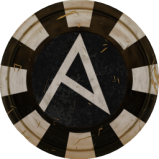

.thumb.jpg.b21ca1d0c15fb56b42c39b25a0a40815.jpg)
.thumb.jpg.b85f1db9873287a0d10cd2c7e88579c0.jpg)
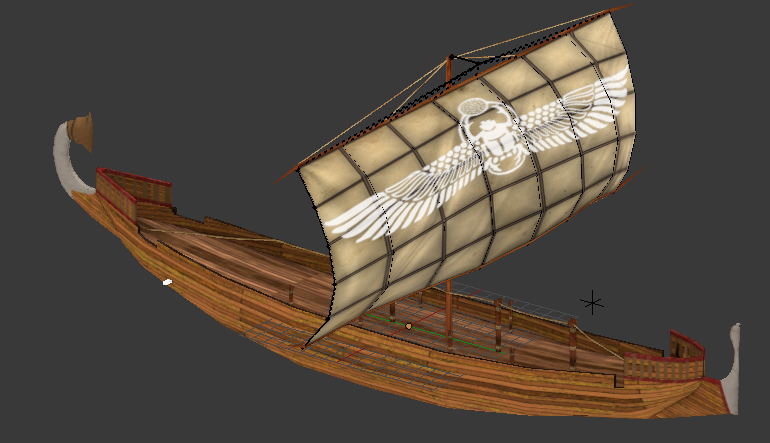
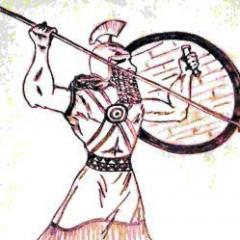


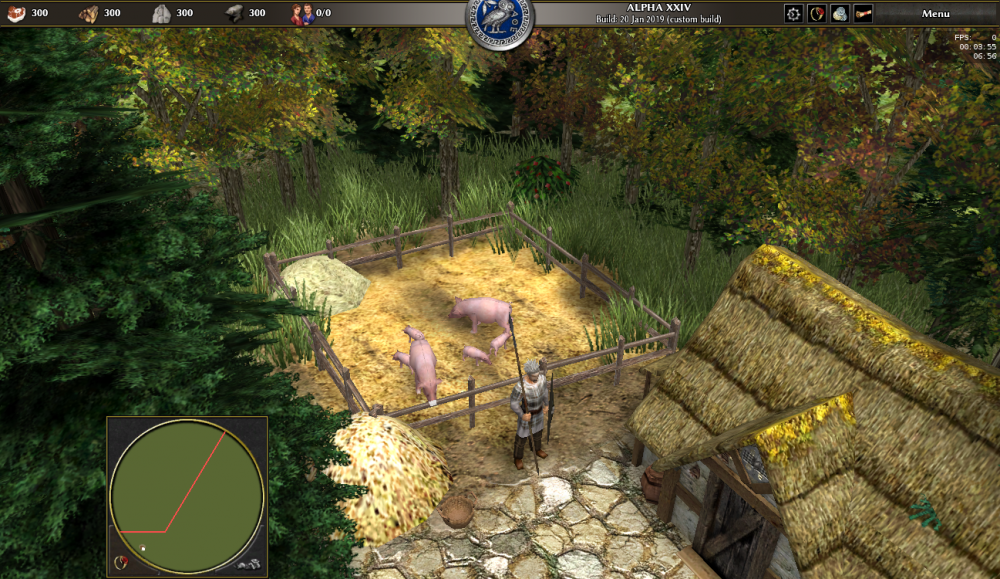
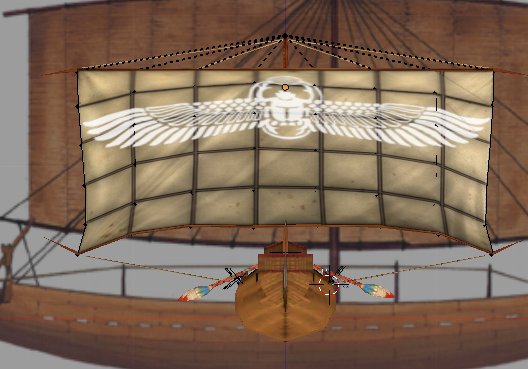
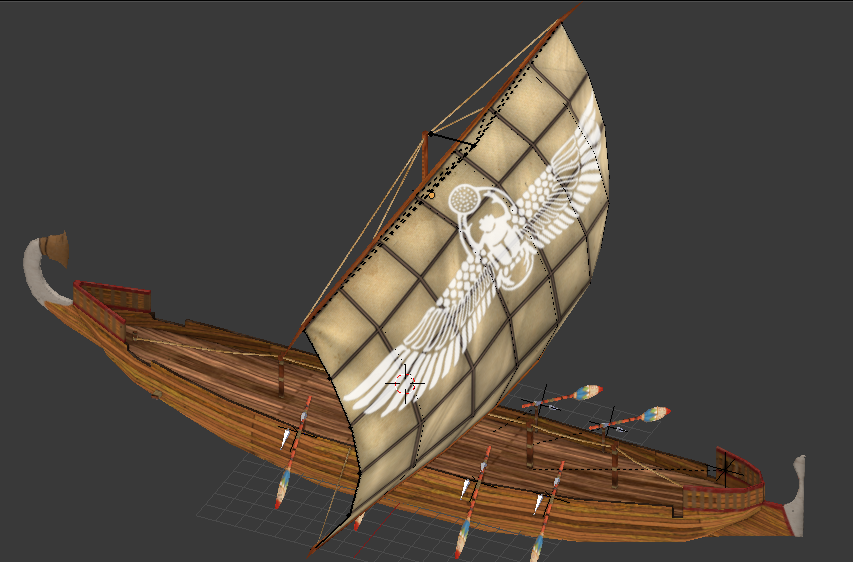


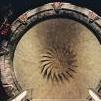
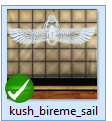
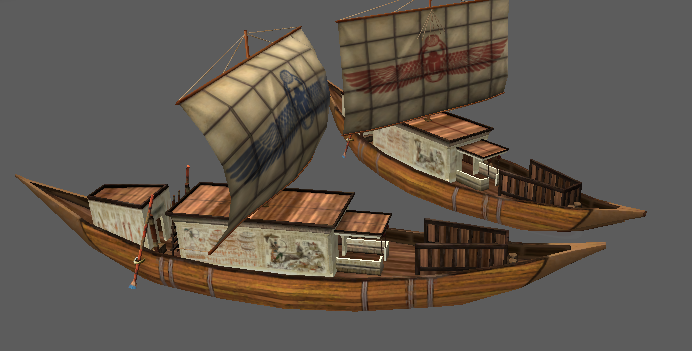
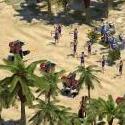
(1).thumb.gif.b5909d3df98a8ec15dc452423f219bc5.gif)
